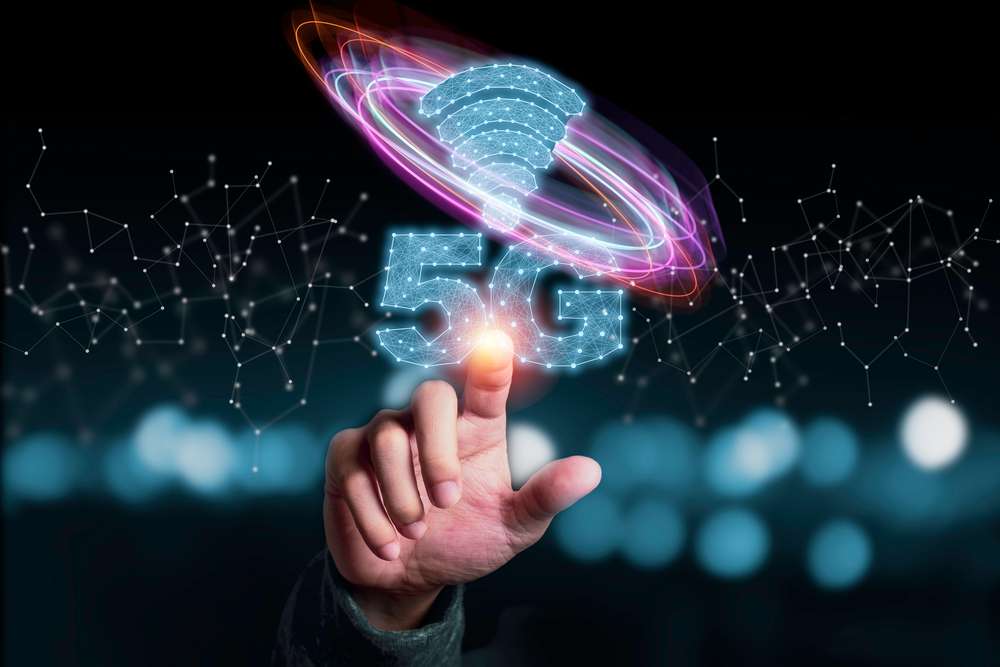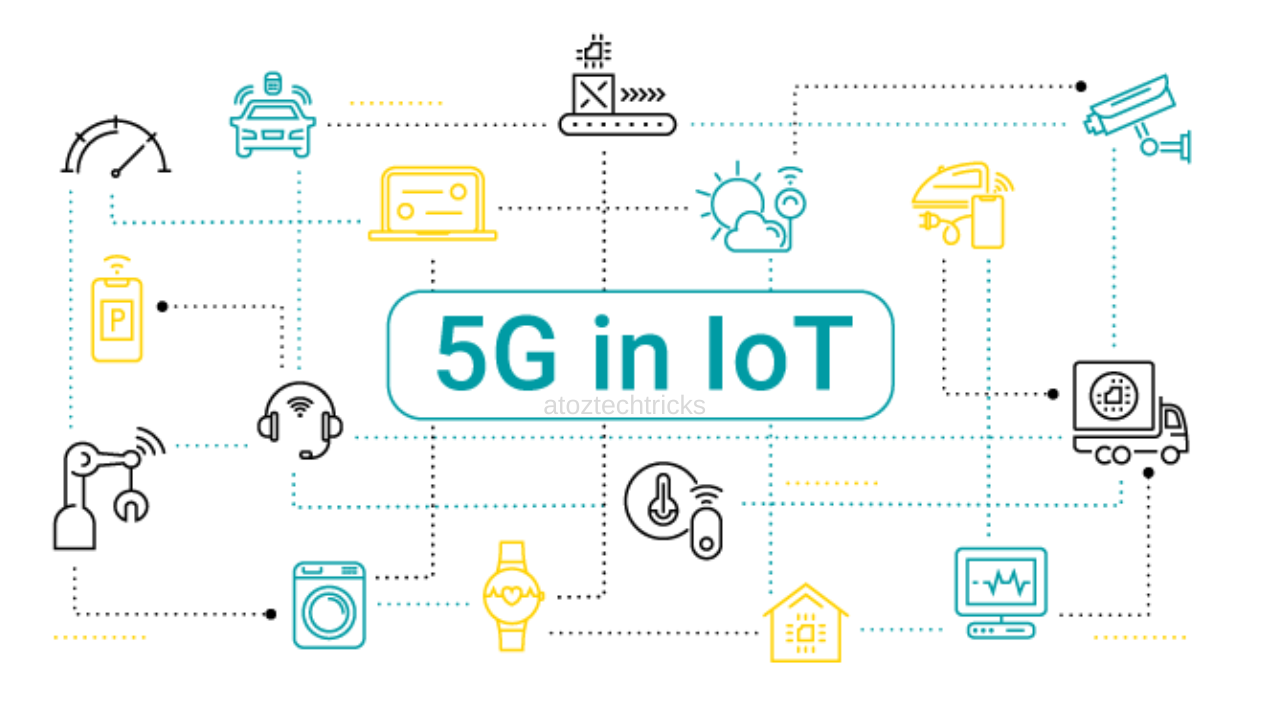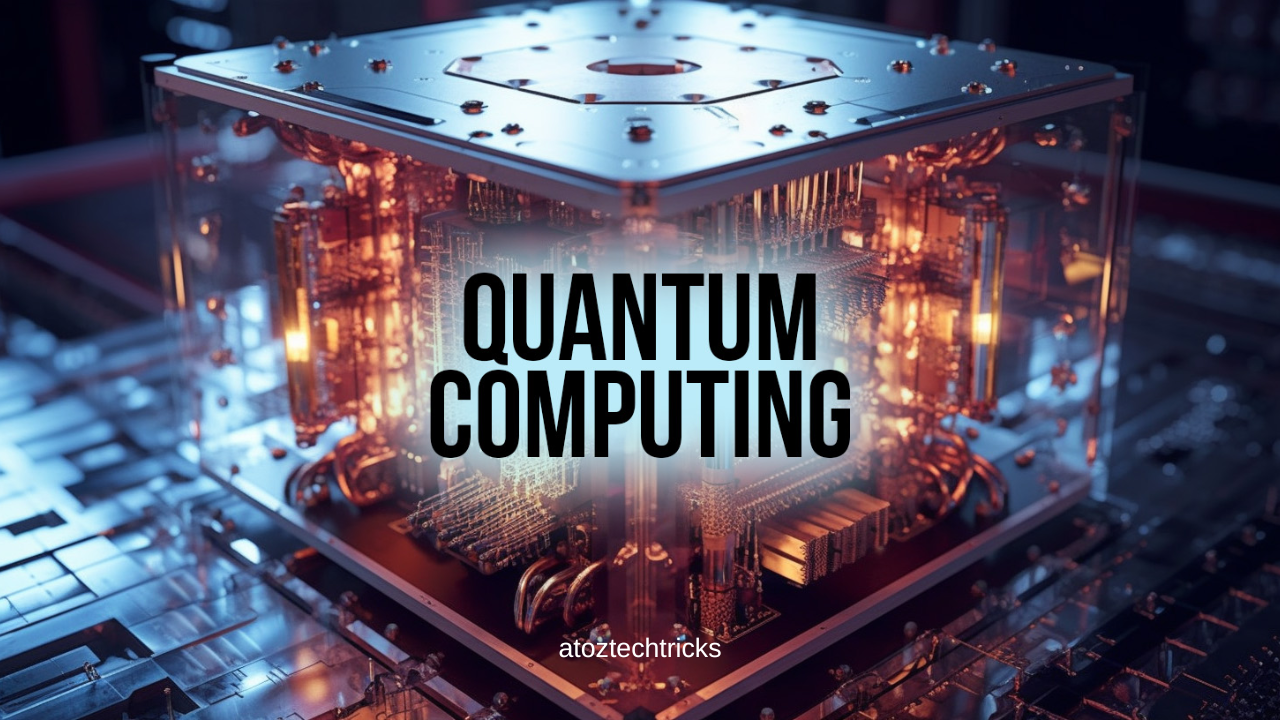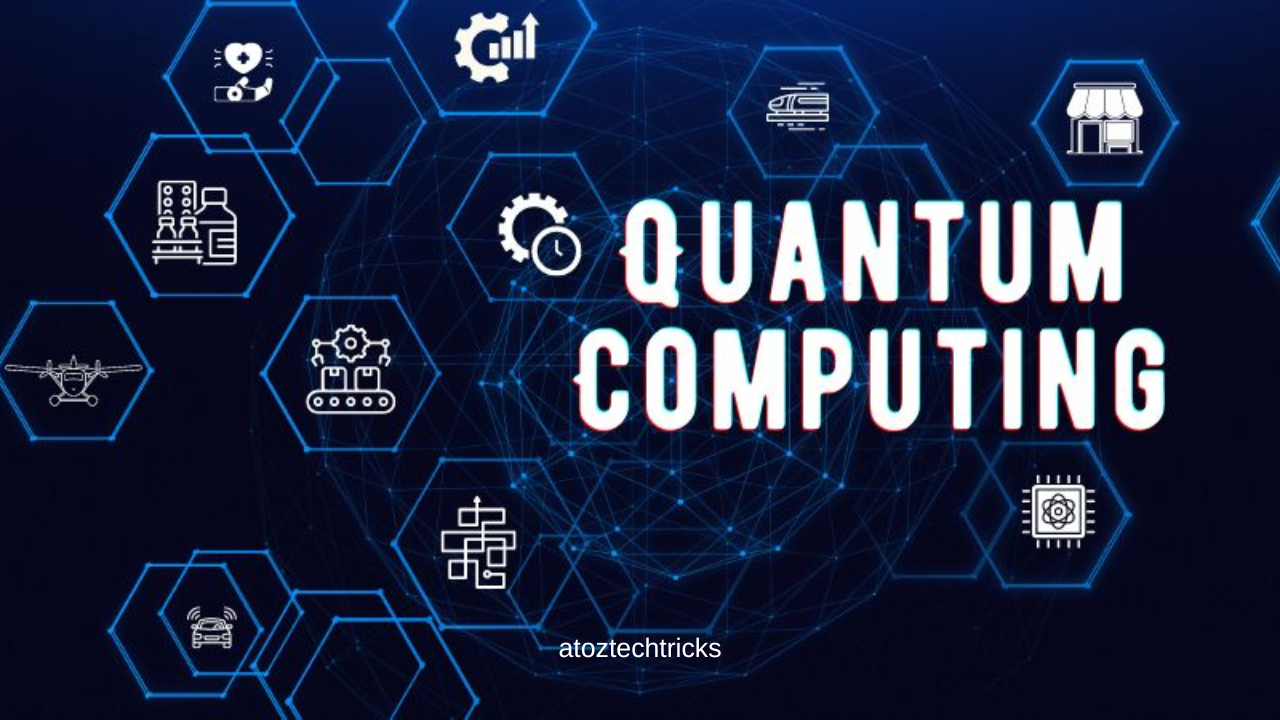Impact of 5G on the Internet of Things
The Internet of Things (IoT) has revolutionized the way we interact with our environment, devices, and each other. From smart homes and wearable devices to industrial automation and connected vehicles, IoT has integrated deeply into our daily lives and business operations. However, as IoT continues to evolve, it faces challenges in terms of connectivity, speed, and scalability. Enter 5G – the fifth generation of wireless technology, promising to overcome these challenges and propel IoT into a new era of innovation and efficiency.
This article explores the profound impact of 5G on the Internet of Things, examining how this advanced network technology will enable the next wave of IoT applications, transform industries, and address the limitations of previous wireless networks.
Understanding 5G and IoT
Before delving into the impact of 5G on IoT, it’s essential to understand what 5G and IoT are.
5G Technology: 5G is the latest generation of cellular networks, succeeding 4G LTE. It offers significantly higher data transfer speeds, lower latency, and the ability to connect a massive number of devices simultaneously. Unlike its predecessors, 5G is designed to support a wide array of services, from enhanced mobile broadband to ultra-reliable low-latency communications and massive machine-type communications.
Internet of Things (IoT): IoT refers to the network of physical objects or “things” embedded with sensors, software, and other technologies to connect and exchange data with other devices and systems over the internet. These “things” can range from everyday household items like refrigerators and thermostats to complex industrial machines and smart city infrastructure.
Implementing 5G in Smart Cities: Transforming Urban Landscapes
How 5G Enhances IoT
The relationship between 5G and IoT is symbiotic. While IoT requires a robust and reliable network to function optimally, 5G provides the necessary infrastructure to support the growing number of connected devices and the vast amount of data they generate. Here’s how 5G enhances IoT:
- Increased Connectivity: One of the most significant advantages of 5G is its ability to connect a vast number of devices simultaneously. While 4G networks can support around 2,000 devices per square kilometre, 5G can support up to 1 million devices in the same area. This increase in connectivity is crucial for IoT applications, especially in densely populated areas or industrial environments where many devices need to communicate with each other.
- Faster Data Transfer Speeds: 5G offers data transfer speeds up to 100 times faster than 4G. This speed enables real-time data processing and communication, which is essential for IoT applications that require immediate responses, such as autonomous vehicles, remote surgeries, and smart traffic management systems.
- Lower Latency: Latency refers to the time it takes for data to travel from one point to another. 5G significantly reduces latency to as low as 1 millisecond, compared to 30-50 milliseconds with 4G. This ultra-low latency is critical for applications that require instantaneous data transmission, such as virtual reality, augmented reality, and critical industrial automation.
- Improved Reliability: 5G networks are designed to be more reliable than previous generations. This reliability is crucial for IoT applications in sectors like healthcare, manufacturing, and transportation, where consistent and dependable connectivity is essential for safety and efficiency.
- Energy Efficiency: 5G is designed to be more energy-efficient, which is essential for IoT devices that rely on batteries or other limited power sources. By reducing the power consumption of connected devices, 5G can extend the battery life of IoT devices, making them more sustainable and cost-effective.
The Impact of 5G on Key IoT Sectors
The advent of 5G is poised to have a transformative impact on several key sectors where IoT is already playing a significant role. Let’s explore how 5G will revolutionize these industries.
1. Smart Cities
Smart cities leverage IoT to enhance urban living by making cities more efficient, sustainable, and livable. IoT devices in smart cities monitor and manage everything from traffic flow and energy usage to waste management and public safety. The introduction of 5G will significantly enhance the capabilities of smart city applications.
- Traffic Management: 5G will enable real-time communication between vehicles, traffic lights, and road sensors, leading to more efficient traffic management and reduced congestion. Autonomous vehicles will also benefit from the low latency and high-speed communication provided by 5G, allowing them to navigate urban environments more safely and efficiently.
- Public Safety: 5G-powered IoT devices can improve public safety by enabling faster response times for emergency services, enhancing surveillance systems, and providing real-time data on environmental conditions like air quality and noise levels.
- Energy Management: With 5G, smart grids can operate more efficiently by balancing energy supply and demand in real-time, integrating renewable energy sources more effectively, and reducing energy waste through precise monitoring and control of energy consumption.
2. Healthcare
The healthcare industry is already witnessing a significant shift toward digital transformation, with IoT playing a critical role in remote patient monitoring, telemedicine, and smart medical devices. 5G will further accelerate this transformation, enabling new and improved healthcare services.
- Remote Patient Monitoring: 5G’s high-speed, low-latency connectivity will allow for continuous monitoring of patient’s vital signs in real time, regardless of their location. This capability is especially beneficial for managing chronic conditions, post-operative care, and elderly patients who require constant monitoring.
- Telemedicine: The COVID-19 pandemic has highlighted the importance of telemedicine, and 5G will take it to the next level. With 5G, healthcare providers can conduct high-quality video consultations with patients, access real-time data from medical devices, and even perform remote surgeries using robotic systems.
- Smart Medical Devices: 5G will enable the development of more advanced smart medical devices, such as wearables that monitor health metrics in real-time and provide immediate feedback to both patients and healthcare providers. These devices can also be integrated with AI and machine learning algorithms to provide personalized healthcare solutions.
3. Manufacturing
The manufacturing sector is undergoing a revolution with the advent of Industry 4.0, where IoT, automation, and data analytics are transforming production processes. 5G will play a pivotal role in enabling smart manufacturing by providing the connectivity required for advanced industrial IoT applications.
- Factory Automation: 5G will enable real-time communication between machines, robots, and control systems, leading to more efficient and flexible production processes. Manufacturers can quickly adapt to changes in demand, reduce downtime, and improve product quality.
- Predictive Maintenance: With 5G, IoT sensors can continuously monitor the condition of machinery and equipment, providing real-time data that can be used to predict when maintenance is needed. This predictive maintenance approach can reduce unplanned downtime, extend the life of equipment, and lower maintenance costs.
- Supply Chain Management: 5G will enhance supply chain visibility by enabling real-time tracking of goods and materials. This improved visibility will lead to more efficient inventory management, reduced lead times, and better coordination between suppliers and manufacturers.

4. Transportation
The transportation sector is on the cusp of a transformation driven by IoT, with connected vehicles, smart traffic systems, and logistics management all benefiting from increased connectivity. 5G will accelerate these changes, making transportation safer, more efficient, and more sustainable.
- Connected Vehicles: 5G will enable vehicles to communicate with each other and with infrastructure in real-time, leading to safer and more efficient roadways. Autonomous vehicles, in particular, will benefit from the low latency and high-speed communication provided by 5G, allowing them to navigate complex traffic situations more effectively.
- Smart Logistics: The logistics industry relies on precise timing and coordination to move goods efficiently. With 5G, logistics companies can track shipments in real time, optimize routes based on current traffic conditions, and reduce fuel consumption through more efficient fleet management.
- Public Transportation: 5G will enhance the efficiency and reliability of public transportation systems by enabling real-time monitoring of vehicles, predictive maintenance, and dynamic scheduling based on passenger demand. Passengers will also benefit from improved connectivity, with access to real-time information on routes, schedules, and delays.
5. Agriculture
Agriculture is another sector where IoT is making significant inroads, with smart farming technologies helping farmers increase yields, reduce waste, and manage resources more efficiently. 5G will further enhance these capabilities by providing the connectivity needed for advanced agricultural IoT applications.
- Precision Farming: 5G will enable real-time monitoring and control of farming equipment, allowing for precise application of water, fertilizers, and pesticides based on current crop and soil conditions. This precision farming approach can increase yields, reduce costs, and minimize the environmental impact of agriculture.
- Livestock Monitoring: IoT devices can monitor the health and behaviour of livestock in real-time, providing farmers with early warnings of potential health issues. With 5G, this monitoring can be done on a larger scale, with data being transmitted instantly to farmers’ devices.
- Supply Chain Optimization: 5G will improve the efficiency of agricultural supply chains by enabling real-time tracking of crops from the field to the market. This improved visibility can reduce waste, ensure the freshness of produce, and help farmers respond more quickly to changes in demand.
Machine Learning and Predictive Analytics: Revolutionizing Decision-Making
Challenges and Considerations
While the impact of 5G on IoT is expected to be overwhelmingly positive, some several challenges and considerations need to be addressed to fully realize its potential.
- Infrastructure Investment: The deployment of 5G requires significant investment in infrastructure, including the installation of new cell towers, fibre optic cables, and other networking equipment. This investment is particularly challenging in rural areas and developing countries, where the cost of infrastructure can be prohibitive.
- Security Concerns: As more devices become connected to the 5G network, the risk of cyberattacks increases. IoT devices are often targeted by hackers due to their vulnerabilities, and the high-speed, low-latency nature of 5G could make these attacks more devastating. Ensuring the security of IoT devices and networks is crucial to preventing data breaches and other cyber threats.
- Data Privacy: The vast amount of data generated by IoT devices raises concerns about data privacy. With 5G enabling more real-time data collection and analysis, there is a need for robust data privacy regulations to protect users’ personal information. Companies must be transparent about how they collect, store, and use data to maintain trust with consumers.
- Spectrum Availability: 5G operates on a wide range of frequencies, and ensuring that there is enough spectrum available for 5G services is a challenge. Governments and regulatory bodies need to allocate spectrum efficiently to prevent interference and ensure that 5G can deliver on its promises.
- Interoperability: The IoT ecosystem is highly fragmented, with many different devices, platforms, and standards in use. Ensuring that these devices can communicate with each other seamlessly on a 5G network is essential for the success of IoT. Standardization and interoperability are key challenges that need to be addressed by industry stakeholders.

The Future of 5G and IoT
The combination of 5G and IoT is expected to drive innovation and create new opportunities across a wide range of industries. As 5G networks become more widespread, we can expect to see the development of new IoT applications that were previously unimaginable.
1. Smart Homes and Buildings
5G will enable the creation of fully connected smart homes and buildings, where all devices and systems are integrated and controlled through a central platform. Residents will be able to control lighting, heating, security, and entertainment systems with ease, and buildings will become more energy-efficient through the use of smart sensors and automation.
2. Autonomous Transportation
Autonomous vehicles are one of the most anticipated applications of 5G and IoT. With 5G providing the necessary connectivity, autonomous vehicles will be able to communicate with each other and with infrastructure in real time, leading to safer and more efficient transportation systems. The development of autonomous public transportation, delivery drones, and smart traffic management systems will further transform the way we move goods and people.
3. Advanced Healthcare Solutions
The healthcare industry will continue to benefit from 5G-enabled IoT applications, with the development of more sophisticated remote monitoring and diagnostic tools. We may see the rise of personalized medicine, where treatments are tailored to individual patients based on real-time data collected from wearable devices and other medical sensors.
4. Industrial Automation
Industry 4.0 will reach new heights with the integration of 5G and IoT. Factories will become fully automated, with machines and robots communicating with each other in real-time to optimize production processes. The use of AI and machine learning will further enhance the capabilities of industrial IoT, leading to more intelligent and adaptive manufacturing systems.
5. Sustainable Agriculture
The agricultural sector will continue to evolve with the help of 5G and IoT, leading to more sustainable farming practices. The use of real-time data will enable farmers to make more informed decisions, reduce waste, and increase productivity. We may also see the development of new agricultural technologies, such as autonomous farming equipment and vertical farming systems.
The impact of 5G on the Internet of Things is poised to be transformative, enabling a new era of connectivity, innovation, and efficiency across a wide range of industries. From smart cities and healthcare to manufacturing and transportation, the combination of 5G and IoT will drive the development of new applications that improve our lives and create new opportunities for businesses.
However, the journey to fully realizing the potential of 5G and IoT is not without its challenges. Issues related to infrastructure investment, security, data privacy, spectrum availability, and interoperability must be addressed to ensure the success of this next-generation technology.
As we move forward into this new era of connectivity, industry stakeholders, governments, and consumers need to work together to overcome these challenges and unlock the full potential of 5G and IoT. The future of technology is interconnected, and with 5G at the helm, the possibilities are truly limitless.




Post Comment